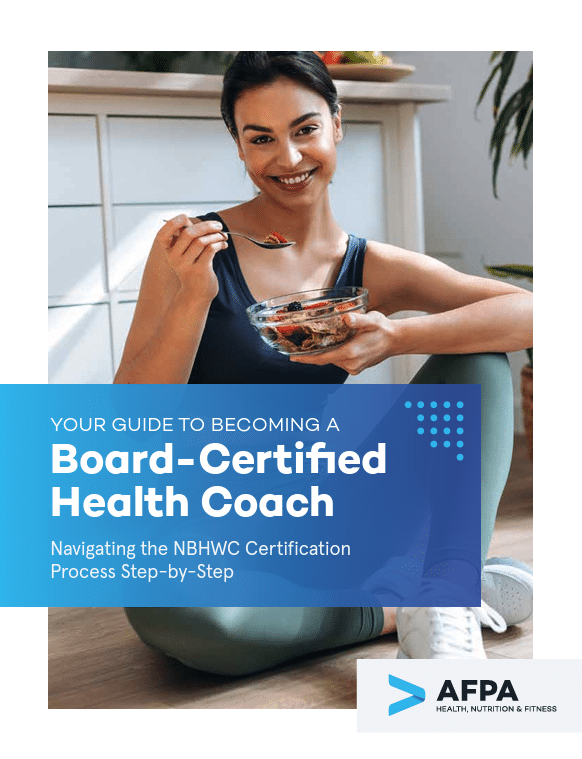The positive impact you can deliver as a fitness professional (e.g., Certified Personal Trainer, Yoga Instructor, or Pilates Instructor) isn’t necessarily limited by the number of hours you can commit to training clients in real-time.
Offering online training programs allows you to leverage your expertise to empower others to be stronger, healthier, and more confident in their bodies without facing time, scheduling, or geographic constraints. It’s also an effective way to scale your fitness business—potentially helping you earn more while living your passion. A win-win situation.
In this article, we guide you through the step-by-step process of building your first online training program in a way that’ll maximize its appeal and value to your ideal target client.
What’s an “Online Training Program”?
There isn’t a strict definition of what an “online training program” entails, but for the sake of this article, we’ll define it as a program that:
- Provides your clients with all the tools they need to achieve their fitness goal at once, AND
- Grants them the freedom to implement the specific workout plans on their own time (without real-time guidance on your end) from anywhere in the world.
When defined this way, an online training program differs from online fitness training in two key ways:
- Scheduling: While online fitness training removes geographical barriers, it typically still happens in real-time. That means you’ll have to find a time that works for you and your client. On the other hand, an online training program allows your client the flexibility to execute the pre-planned workout program any time they wish (provided they keep to general guidelines, like how often to work out and rest on a weekly basis).
- Access to knowledge: An online training program usually gives clients access to all program materials (e.g., exercise demonstrations, fleshed-out workout plans, and tracking worksheets) immediately after purchase. With online fitness training, on the other hand, you’ll be more likely to space out the information given to clients—giving them only what they need at that moment of their journey (e.g., only demonstrate “advanced” yoga poses when they’ve mastered the basics).
An Additional Note on Online Training Programs
Note that this doesn’t necessarily mean that an online training program is better than online fitness training or vice versa.
Both have pros and cons worth measuring against your business and clients’ needs.
You don’t have to see them as an “either-or” choice. Sometimes, it may make sense for you to offer a client a mixture of both.
For example, if you’re a Pilates instructor, you could have a client do a “bridging” online training program to improve their flexibility before moving them to one-on-one sessions. Ultimately, how you structure your offerings is up to you.

Grow Your Income and Impact as a Personal Trainer and Board-Certified Health Coach
How to Build Your First Online Training Program
Ready to create a transformational, value-packed online training program that’ll have your target clients reaching for their credit cards?
While the following is by no means an exhaustive list of the steps you need to take to create and sell an online training program, it does provide you with a bird’s eye view of the significant milestones to hit. You’ll also find essential tips geared toward maximizing your success sprinkled along the way.
#1: Map Out Your Ideal Client
Imagine that your online training program guides pregnant individuals on how they could adapt their exercise regimen to their changing bodies and prep their pelvic floor muscles for birth.
Would a non-pregnant client be interested in your program? Well, not really, because it’s not immediately relevant to them.
But would a pregnant client be interested? The likelihood is much higher in comparison.
This, in turn, highlights the importance of defining the type of clientele you wish to serve. Beyond guiding your marketing messages (which we’ll cover in a bit), taking the time to define your ideal client also informs you of what you should put in and how you could structure your online training program.
A few helpful questions to keep in mind during the process include:
- What are their goals?
- What are their pain points (i.e., what’s stopping them from achieving their goals)?
- How much training experience do they have?
- What lifestyle do they follow?
Struggling to think of a specific group of clients you wish to help? Here’s a tip: Look for inspiration in your existing clients. What are their common pain points? Is it possible for you to address those through an online training program?
#2: Determine Program Outcomes
Put yourself in a potential client’s shoes: Would you buy an online training program you don’t understand and have no idea what it’ll do for you? Highly unlikely.
So, do write down the specific outcomes you’d like your client to achieve upon completion of your program. Think of your program as a vehicle for transformation for your clients, bringing them from their current reality to their desired future.
In addition to enhancing your program’s appeal to clients, this exercise helps you better decide what information you should include in your training program—and what stuff you could leave out. In other words: This makes your program creation course much easier since you can omit anything that does not directly relate to achieving a learning outcome.
But how do you create irresistible learning outcomes demonstrating your program’s value? Asking yourself the following questions during the process may help sharpen your writing:
- What will your client achieve?
- How will they feel?
- What other benefits can they expect?
Here’s an example of what you could write if you’re pushing out a yoga training program targeted at individuals new to the practice:
“Learn and master fundamental pranayama techniques, including the Nadhi Sodhana and Sitali Pranayama, that’ll clarify your mind, energize your body, and deepen your yoga practice. Also, understand how to tweak these techniques to suit your own practice (e.g., integrating pranayama and asana).”
#3: Put Together Your Program Materials
The content you include within your online training program will ultimately depend on your specific fitness profession (i.e., whether you’re a personal trainer, yoga instructor, or Pilates instructor) and learning outcomes.
In general, a good place to start is by fleshing out fitness plans. Give thought to things like:
- Exercise selection: Keep your ideal client in mind to ensure you’re selecting the right exercise and level of difficulty for them and their goals. It’s also a good idea to include exercise modifications or alternatives to account for common injuries (e.g., proposing bodyweight squats instead of jump squats for those with knee issues).
- Training frequency: How many days a week would you have a client train? A rule of thumb is that beginners to any sport would benefit from a lower frequency (e.g., two to three times weekly), while those more advanced would do well on a higher frequency (e.g., three to five times weekly). Asking a client who is completely new to fitness to jump right into working out five times a week would be overwhelming, not to mention unrealistic.
- Recovery strategies: What would you recommend your clients do on rest days? Feel free to check out this article on the top five recovery methods scientifically proven to work for ideas
#4: “Deck Out” Your Online Training Program with Features (Where Necessary)
Review the fitness plan once complete to ensure that it aligns with your learning outcomes. Then, you may wish to “deck out” your online training program with the following features:
- Written material: If there’s anything you wish to dive into in detail (e.g., the principles behind muscle growth or why you’ve selected a particular exercise), consider packaging it into downloadable online resources clients could easily refer to as they move along your training program.
- Video demonstrations: Exercise demonstrations could be particularly helpful in assisting clients better understand and grasp proper form.
- Printable schedules or calendars: These may help clients stay on track with their fitness goals and allow them to see what to expect in the upcoming weeks.
- Access to a members-only community (e.g., a Facebook group): This allows your clients to get support from like-minded individuals working toward the same goals. Why’s that important? Well, a large body of research indicates that individuals with a solid support system are more likely to meet their lifestyle change goals—and maintain them—than those who lack a support system.
It’s important to note that you don’t have to include everything listed above in your online training program. Instead, keep your pricing strategy in mind when decking out your feature list.
A good practice is to scale your feature list with your program price: The higher your price point, the more features you should include (so clients can justify the amount of money they’re forking out for your program).
Accessibility Is Key
Keep accessibility at the top of your mind while creating your content. Doing so helps create a fully inclusive fitness program for everyone, including those with visual, cognitive, physical, and auditory disabilities.
Here are a few tips on how you could create accessible content:
- Documents (written content):
o Provide a clear heading structure
o Provide alternative text for images
o Use color appropriately (e.g., ensure sufficient contrast between the color of text and the background color of a document)
o Use legible fonts
- Media (Videos):
o Add subtitles/captions to your videos
o Provide transcripts for video and audio files
o Provide audio descriptions for videos
Wish to dive deeper into how you could make your online training program usable, sensible, and meaningful to as many people as possible? Then click here to grab your copy of AFPA’s free Digital Accessibility Guide for Health and Wellness Professionals.
#4: Soft Launch to Existing Clients and Gather Feedback
Congratulations! At this stage, your online training program is close to completion. Before you launch to the mass market, though, you may wish to “soft-launch” the program to existing clients who could help:
- Spot any mistakes
- Clarify unclear instructions or messaging
- Identify possible areas of improvement
By the way, secure product liability insurance before soft launching (if you haven’t already!).
#5: Promote Your Online Training Program
You’ve now got a value-packed online training program on your hands—how do you get your ideal clients interested in it? Answer: Marketing.
Here are three strategies that could help you get started:
- Build a sales page: A sales page only has one goal: to influence someone to purchase your training program. Optimize your sales page for conversion by including a compelling headline, benefits of your training program (feel free to paraphrase your learning outcomes), testimonials (possibly from your existing clients), your bio, pricing details, and some form of risk reversal (e.g., a money-back guarantee). Aim to drive all traffic to your sales page. Host it on your website if you have one.
- Word of mouth marketing: Encourage or incentivize your clients to share your new online training program with anyone they think may benefit from it. Consider setting up a “family and friends” discount for your initial launch.
- Paid marketing: If you have the budget, paid marketing could be a viable option to increase your reach. Examples of paid marketing strategies include social media paid marketing, Google Ads, influencer marketing, and affiliate marketing.
Takeaway
Interested in launching your own online training program? Hopefully, the steps outlined above give you a sense of where to start.
Begin with identifying your target audience and determining the outcome you want for them. Once you have all that clearly defined, move on to creating program materials and deciding on key features to include. Then, launch it to existing clients (where possible) before making it available for sale.
Oh, and if you’re looking to grow your business and make an even bigger impact on clients, you may also wish to consider picking up expertise relevant to your field. Courses you could enroll in include AFPA’s:
-
Sports Nutritionist Certification: Learn how to develop tailored nutrition plans for your clients to get the most out of their workouts.
Holistic Health Coach Certification: Coach and educate clients on how to achieve and sustain healthy habits to obtain optimal physical and emotional well-being.




